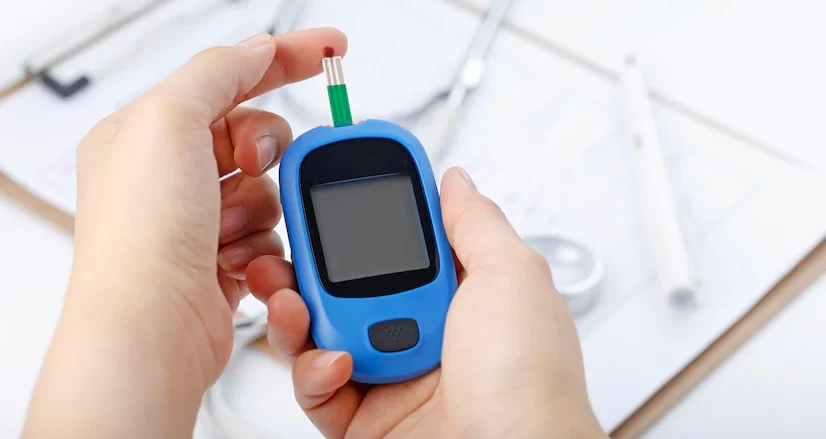- 2.1 Central diabetes insipidus:
- 2.2 Nephrogenic diabetes insipidus:
- 2.3 Dipsogenic diabetes insipidus:
- 2.4 Gestational diabetes:
- 3.1 Treatment
Diabetes insipidus is characterized by excessive thirst and urine production. Insufficient vasopressin, a hormone generated by the brain that tells the kidneys to retain water, is responsible for the condition. In the absence of sufficient vasopressin, excessive water is lost through urine, causing the afflicted individual to consume large quantities of fluids to maintain fluid levels. In extreme situations, a person may urinate up to 30 litres/day. Without therapy, diabetes insipidus can lead to dehydration and, ultimately, coma owing to the high concentration of salts, mainly sodium, in the blood.
What are the symptoms of diabetes insipidus?
Infants with inherited nephrogenic diabetes insipidus may feed poorly, fail to gain weight and fail to develop normally (failure to thrive). Diabetes symptoms in men may include irritability, fever, diarrhoea, and vomiting. Repeated episodes of dehydration might impede growth and development. If the illness is not handled correctly, it can cause bladder and kidney damage over time, resulting in discomfort, infections, and renal failure. With proper care, afflicted persons often have minimal difficulties and live everyday lives.
What are the different kinds of diabetes insipidus?
There are four distinct kinds of diabetes insipidus:
Central diabetes insipidus:
The most prevalent type of diabetes insipidus is central diabetes insipidus. The body lacks sufficient antidiuretic hormone (ADH or vasopressin). The hypothalamus generates ADH, whereas the pituitary gland stores and secretes it. If the pituitary gland or hypothalamus is injured, central diabetes insipidus can occur.
Nephrogenic diabetes insipidus:
This kind of diabetes insipidus occurs when the pituitary gland secretes an adequate amount of ADH, but the kidneys do not react appropriately and cannot retain water.
Dipsogenic diabetes insipidus:
In this kind of diabetes, insipidus, a hypothalamic problem unrelated to ADH production, promotes thirst and increased fluid intake.
Gestational diabetes:
Gestational diabetes insipidus is an uncommon, transient illness that can manifest during pregnancy. It develops when the placenta, a temporary organ that nourishes the fetus, produces an excessive amount of an enzyme that degrades ADH. Gestational diabetes insipidus often disappears soon after pregnancy ends. It is not to be confused with gestational diabetes, a form of diabetes mellitus that can develop in non-diabetic women during pregnancy. Gestational diabetes mellitus produces elevated blood glucose levels.
What causes diabetic insipidus?
Both nephrogenic and cerebral diabetes insipidus may be inherited or acquired. Approximately one-third of cases of diabetes insipidus cannot be attributed to a specific cause.
The following are recognized causes of diabetic insipidus:
- The brain generates little to no vasopressin in cranial diabetes insipidus.
- Traumatic brain injury, pituitary tumours, and neurosurgery (in these patients, diabetes insipidus may only be short-term).
- Infiltrating disorders include hemochromatosis (an excessive amount of iron in the body) and sarcoidosis (where patients have clumps of immune cells in several organs).
- Infections such as TB (lung infection caused by Mycobacterium tuberculosis bacteria) and meningitis (bacterial or viral infection of the central nervous system), as well as genetic abnormalities, are examples of infectious diseases (sporadic).
- In nephrogenic diabetes insipidus, the brain produces adequate vasopressin, but the kidneys are unresponsive and unable to concentrate the urine.
- Gestational diabetes insipidus occurs only during pregnancy and is often caused by placental enzymes degrading antidiuretic hormone.
- People with primary polydipsia may have consumed too much water because they believe that drinking water is advantageous to their physical well-being.
Treatment
The primary objective of therapy for all kinds of diabetes insipidus is to reduce urination and alleviate thirst. Desmopressin is often used to treat most diabetes insipidus types in adults and children (DDAVP). This medication is synthetic vasopressin and is available in various dosage forms, including tablets, injectables, and nasal sprays. DDAVP substitutes vasopressin, which the body is unable to produce. However, it is essential to utilize the correct dose of DDAVP when required because excessive amounts may cause the body to retain excess fluid and develop hyponatremia.
As nephrogenic diabetes insipidus is caused by the kidneys’ inability to react to vasopressin, DDAVP is ineffective in such cases. A doctor will instead seek to address the underlying problem, which may involve altering medicines or prescription thiazide-class diuretics to reduce the volume of pee the kidneys generate. Diabetes insipidus can be challenging to diagnose, and it may be necessary to rule out other illnesses with similar symptoms, such as diabetes symptoms in men and women. In most cases, the disease may be managed by drinking enough water and using drugs to maintain hydration.
Conclusion
If you feel dehydrated repeatedly, it could indicate diabetes insipidus. Though it is challenging to attribute a source for diabetes insipidus – it could be both nephrogenic and cerebral. Desmopressin (DDAVP) is used to treat diabetes insipidus in both adults and children. As a patient, it is vital that you drink enough water regularly, watch out for symptoms, and use the proper drugs as advised by your doctor.
